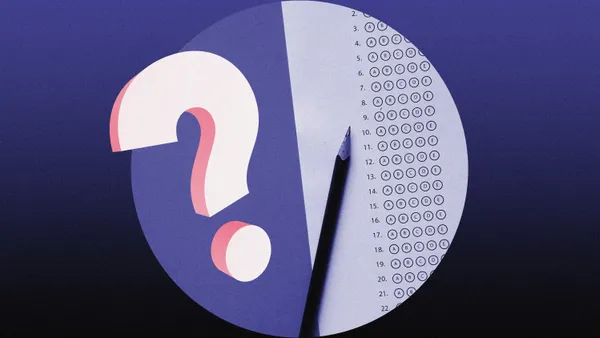Dive Brief:
- Over 400,000 teachers — or about 1 in 10 — nationwide will receive free training to develop artificial intelligence fluency skills by 2030 through the National Academy for AI Instruction, a $23 million initiative announced Tuesday by the American Federation of Teachers, United Federation of Teachers, Microsoft, OpenAI and Anthropic.
- The National Academy for AI Instruction will launch a flagship campus in New York City this fall and is expected to scale nationally. It will initially focus on supporting AFT’s K-12 members before eventually opening up to all educators.
- The academy plans to offer workshops, online courses and hands-on AI training to teachers and will also focus on broadening access to these resources, particularly in high-need school districts.
Dive Insight:
The academy marks the first partnership between a national union and technology companies that aims to “create a sustainable education infrastructure for AI,” AFT said in its announcement.
Some 6 in 10 teachers reported using an AI tool for their work during the 2024-25 school year, according to a survey released in late June by Gallup and the Walton Family Foundation.
Notably, nearly a third of teachers said they use the tools at least weekly, while 28% reported frequency of monthly or less, the survey found.
Some of teachers’ most commonly reported uses for AI include teaching preparation, creating worksheets or activities, or adjusting materials to students' needs.
Frequent users reported time savings from AI — on average, 5.9 hours weekly, adding up to six weeks per school year.
Most teachers who use AI also said the technology is improving the quality of their work at least somewhat. For instance, 57% said AI helped with grading, and 74% said it helped with administrative work, the survey found.
While there are more promising signs of AI use in the classroom, AFT President Randi Weingarten said in a Tuesday statement that it’s important for educators to play a key role in determining how the technology benefits students.
“The direct connection between a teacher and their kids can never be replaced by new technologies, but if we learn how to harness it, set commonsense guardrails and put teachers in the driver’s seat, teaching and learning can be enhanced,” Weingarten said.
Launching of the National Academy for AI Instruction comes as district level AI training for teachers was found to be uneven in 2024. According to a RAND Corp. report, low-poverty districts were far more likely than high-poverty districts to offer teacher training on the technology — at 67% vs. 39%.
RAND projected the gap wouldn't go away this year based on districts’ reported plans for the fall, meaning high-poverty schools would “likely need additional support to prepare their teachers for AI.”
At the federal level, the Trump administration has doubled down on efforts to support AI implementation in schools through an April executive order. The administration just last week announced that over 60 tech companies and associations have signed a pledge to support the president’s goal to make AI accessible to all students.
Former U.S. Department of Education employees, however, have voiced concerns over Trump’s executive order after the Education Department eliminated the more than 30-year-old Office of Educational Technology. OET was cut as part of the administration’s broader effort to scale back the department. The office had focused on making access to tech tools, including AI, more equitable in schools nationwide.






 Dive Awards
Dive Awards





